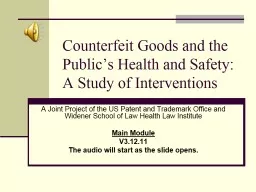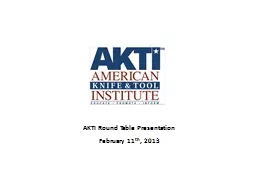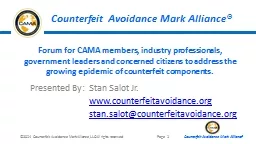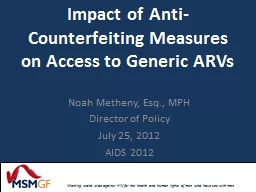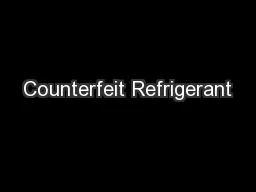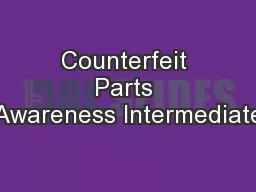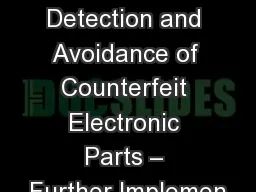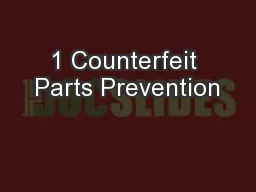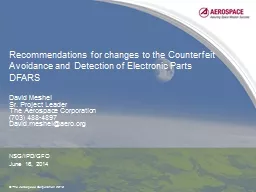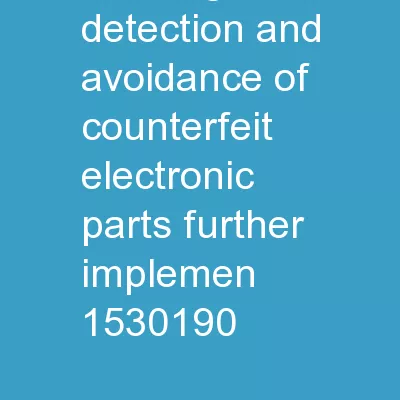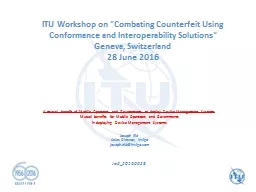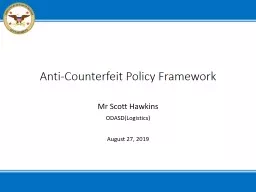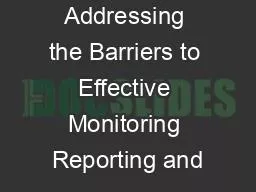PPT-Counterfeit Goods and the Public’s Health and Safety:
Author : giovanna-bartolotta | Published Date : 2016-03-10
A Study of Interventions A Joint Project of the US Patent and Trademark Office and Widener School of Law Health Law Institute Main Module V31211 The audio will start
Presentation Embed Code
Download Presentation
Download Presentation The PPT/PDF document "Counterfeit Goods and the Public’s He..." is the property of its rightful owner. Permission is granted to download and print the materials on this website for personal, non-commercial use only, and to display it on your personal computer provided you do not modify the materials and that you retain all copyright notices contained in the materials. By downloading content from our website, you accept the terms of this agreement.
Counterfeit Goods and the Public’s Health and Safety:: Transcript
Download Rules Of Document
"Counterfeit Goods and the Public’s Health and Safety:"The content belongs to its owner. You may download and print it for personal use, without modification, and keep all copyright notices. By downloading, you agree to these terms.
Related Documents

